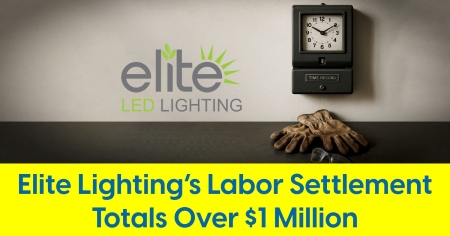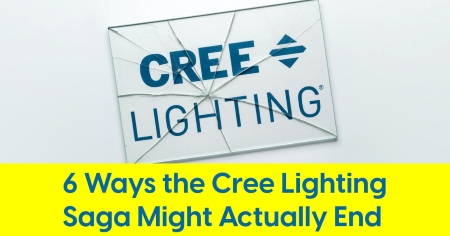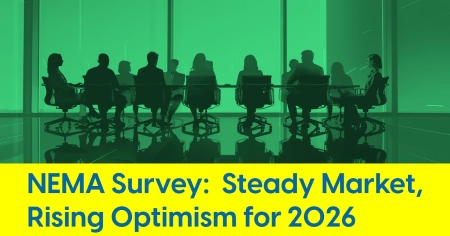October 12, 2021
Lighting & Controls Markets Have Incredible Room to Grow
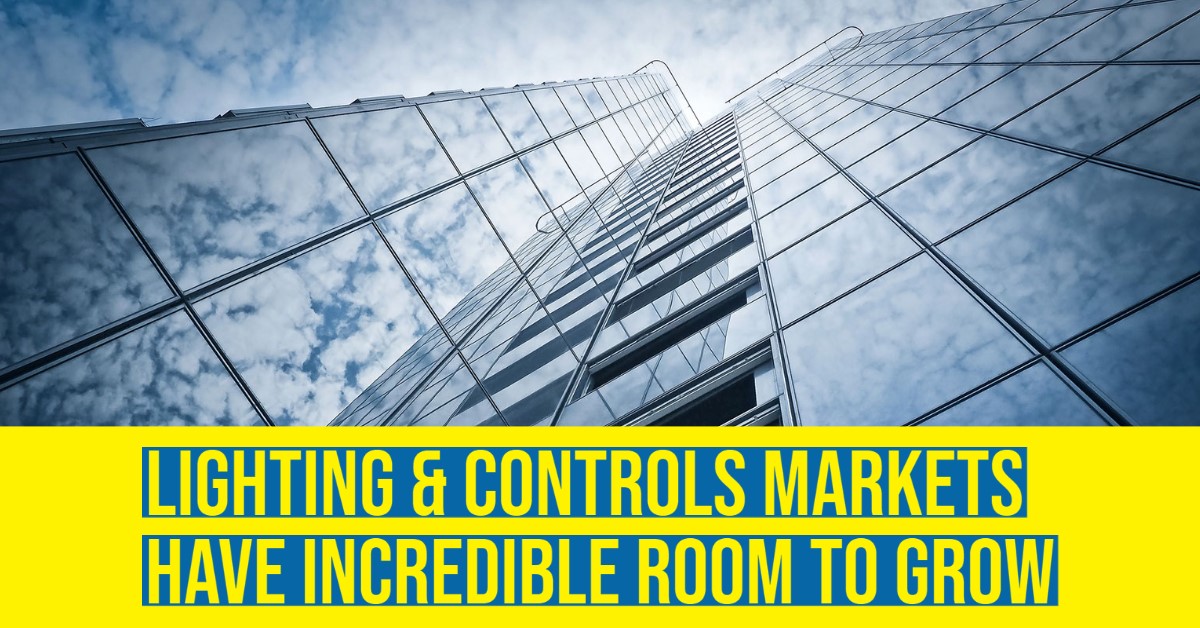
The majority of U.S. commercial building space is still not utilizing LED lighting AND controls
As buildings and their fluorescent light sources age, over 50 billion square feet of commercial building space could benefit from LED lighting and controls upgrades.
A new report issued by the U.S. Energy Information Administration (EIA) reveals data for commercial buildings that offer insights into building characteristics and the use of lighting features and technology. The EIA has conducted the Commercial Building Energy Consumption Survey (CBECS) periodically since 1979, as required by Congress. The most recent report published in September 2021, includes building data through 2018.
Since the end of the 2018 survey period, the COVID pandemic has altered the way commercial buildings are being utilized. Yet even as once-bustling office buildings are now seeing significantly fewer occupants, that doesn’t dismiss that building systems are still active and energy consumption is still close to pre-pandemic levels in many cases.
Takeaways from EIA’s CBECS building characteristics results
- Newer buildings are larger, on average, than older commercial buildings.
- Warehouse and storage, office, and service buildings are the most common building types.
- Building types with the largest percentage increase in the number of buildings since 2012 were service, public assembly, and lodging.
- Shares of commercial buildings, commercial floorspace, and the U.S. population are highest in the South Census Region.
- Out of all types of lighting equipment, only LED lighting use increased since 2012.
The lighting controls market still has incredible room to grow
From a lighting perspective, the report reveals that occupant sensing is the most popular lighting feature in commercial buildings touching over 40% of commercial floorspace. Fewer than 10% of commercial buildings feature dimming or multi-level switching. Fewer than 10% utilize building automation systems for lighting.
Unsurprisingly, the report revealed that out of all types of lighting sources, only LED lighting use increased since 2012.
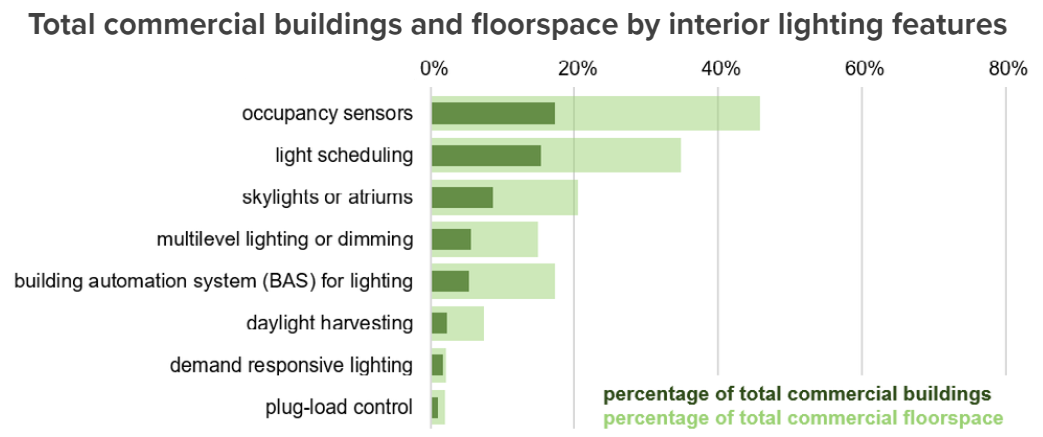
Buildings and Floorspace
- The CBECS estimates that the total number of buildings increased 6% from 2012 to 2018 and that total floorspace increased 11%.
- From the first CBECS in 1979 to the 2018 CBECS, the number of buildings has increased from 3.8 million to 5.9 million (56%), and the amount of commercial floorspace has increased from 51 billion square feet to 97 billion square feet (89%).
-
Warehouse and storage, office, and service buildings together accounted for 48% of all commercial buildings and 42% of total commercial building floorspace.
-
Although service buildings were the third most common building type, these buildings accounted for only 7% of total floorspace. Education buildings accounted for 7% of all buildings, but they accounted for 14% of total floorspace.
-
Although food service buildings accounted for 5% of all commercial buildings, they accounted for only 1% of total floorspace. Lodging buildings accounted for 4% of commercial buildings, but they accounted for 7% of total floorspace.
Most buildings were small, but large buildings dominated total floorspace
- The smallest buildings (1,001 square feet [sf] to 5,000 sf) accounted for almost half of all commercial buildings, but they occupied only 8% of total commercial floorspace.
- Nearly three-fourths (71%) of buildings were 10,000 sf or smaller.
- Buildings larger than 100,000 sf accounted for less than 3% of commercial buildings but 34% of commercial floorspace.
- The median building size was 5,400 sf; the average building size was 16,300 sf
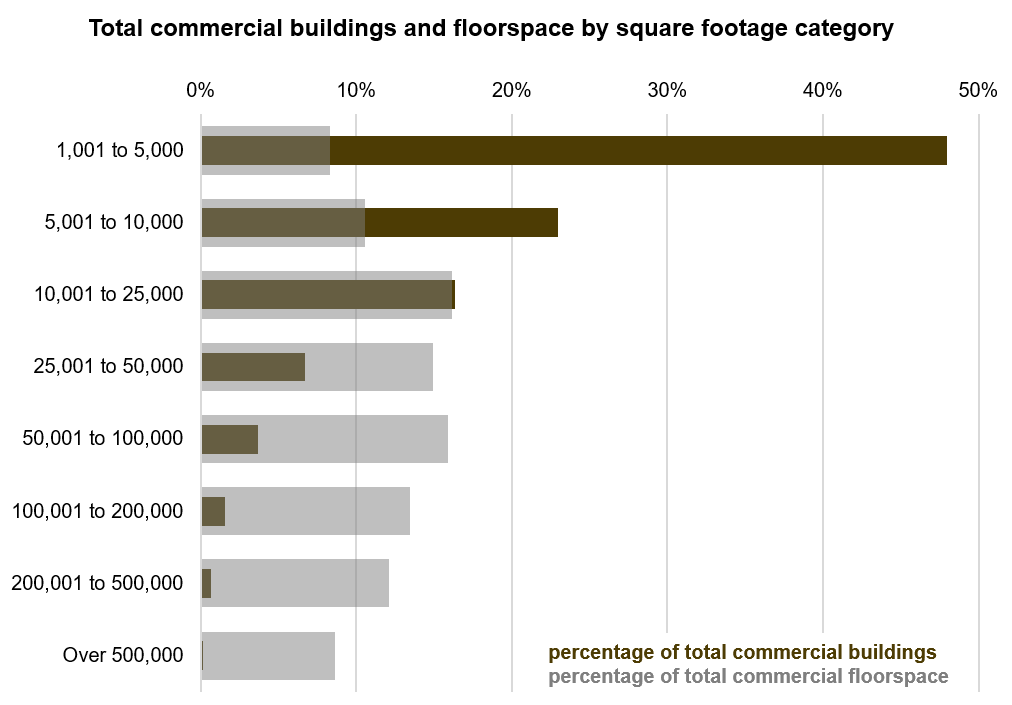
More than half of U.S. commercial buildings were built between 1960 and 1999
- Buildings built between 1960 and 1999 accounted for more than 50% of both total number of buildings and of floorspace.
- One-quarter of buildings (25%) were built after 2000, accounting for 29% of total floorspace.
- Buildings built before 1960 represented 21% of buildings but only 17% of total floorspace.
- The median year of construction was 1982.
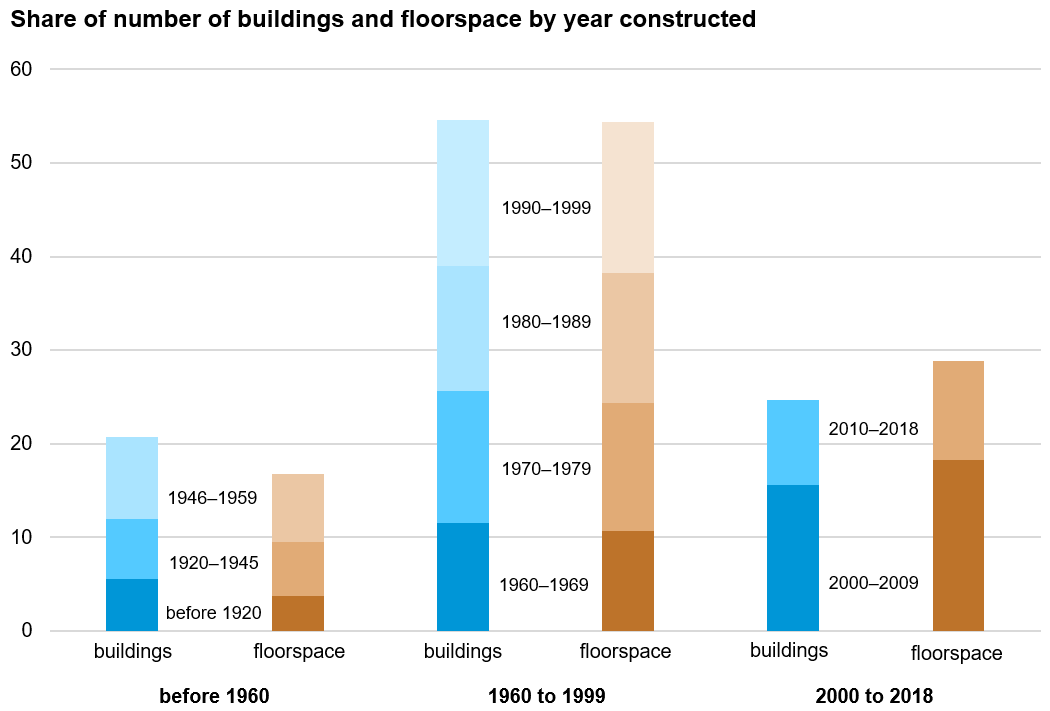
Out of all types of lighting sources, only LED lighting use increased since 2012
- Standard fluorescent lighting was used in 68% of buildings, falling from 84% in 2012.
- The percentage of commercial buildings that used LED lighting increased from 9% in 2012 to 44% in 2018.
- Aside from LED, all other source types decreased in usage between 2012 and 2018.
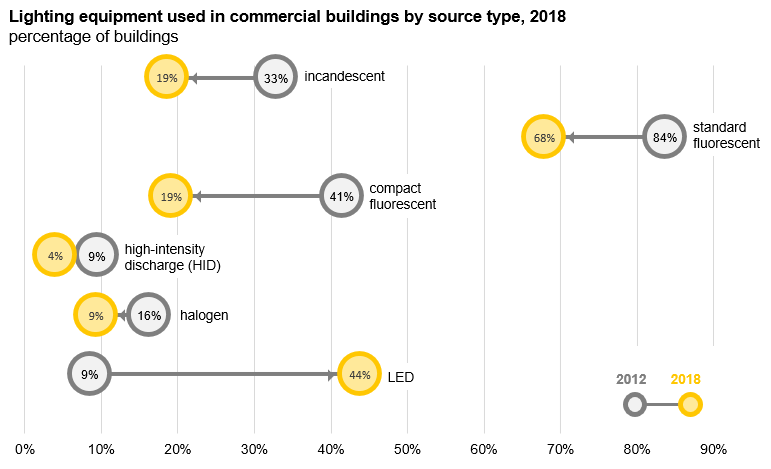
Don’t miss the next big lighting story…Click here to subscribe to the inside.lighting InfoLetter |






